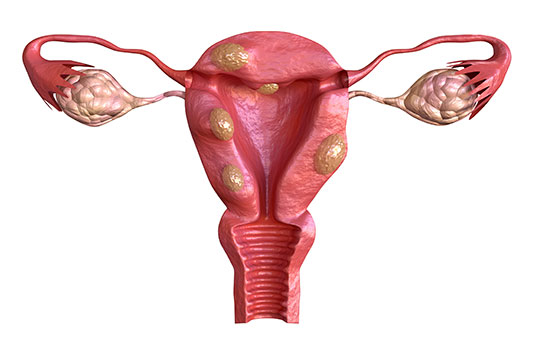Uterine Fibroid Embolization
The Interventional Radiologists at MRA specialize in the diagnosis, treatment, and care of uterine fibroids.

What are uterine fibroids?
Uterine fibroids are common muscular tumors that grow in the wall of the uterus. They are almost always benign (not cancerous). In some women, these may cause pain, heavy menstrual bleeding, frequent urination, or other symptoms.
Fibroids causing symptoms can often be treated with over-the-counter medicines or hormonal drug therapy. For persistent or moderate-severe symptoms, surgery is an option, in which a fibroid or the entire uterus is removed.
However, this is no longer the only choice. Increasing numbers of women are choosing to undergo Uterine Fibroid Embolization due to the excellent results, the minimally invasive nature, and shorter recovery time.
Uterine Fibroid Embolization begins by inserting a catheter (a thin, flexible tube) into a blood vessel in the groin or wrist. Using real-time imaging guidance, it is navigated to the arteries supplying the uterus and fibroids. Once the catheter is in position, tiny particles are injected which block the blood supply to the fibroids, causing them to shrink. It is performed through an incision in the skin the size of a pencil tip.
Almost all patients go home the next day with oral medications to control pain or nausea. These symptoms generally resolve completely within one week.
Nearly 90% of women who undergo UFE experience significant or complete resolution of their symptoms, without the need for surgery.
UFE is typically covered by insurance. Your out-of-pocket expense will depend on your specific insurance plan.
Request a consultation today:
One of our expert Interventional Radiologists will personally review your imaging and case with you, and discuss whether Uterine Fibroid Embolization is the right option for you.
Patients, please note that services may require a referral from your primary care or another provider, but we can help facilitate that process if treatment is deemed necessary. Telehealth consultations may be available depending on the type of procedure required.

